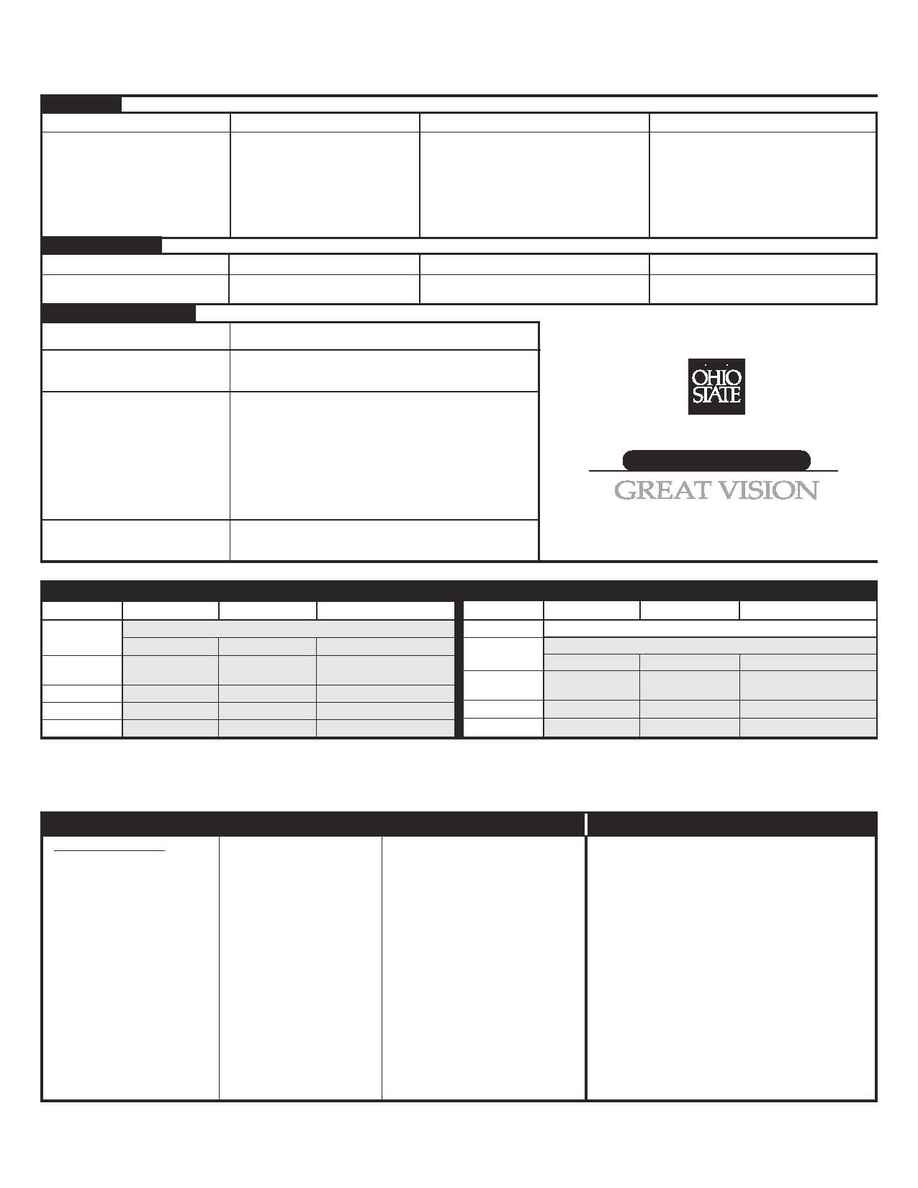
EVALUATION AND MANAGEMENT CODING
HISTORY
Problem Focused
chief complaint, brief history of
present illness (HPI) or problem
1-3 items HPI
EXAMINATION
Problem Focused
1-5 items
DECISION MAKING
Straightforward
Low Complexity
Moderate Complexity
High Complexity
Expanded Problem Focused
chief complaint, brief history of
present illness, problem pertinent
review of systems (ROS)
1-3
HPI
1
ROS
Expanded Problem Focused
6-8 items
Detailed
chief complaint, extended history of
present illness, extended system review,
pertinent past, family, & social history
(PFSH)
4-8
HPI
2-9
ROS
1 area
P,F,SH
Detailed
9-13 items
Comprehensive
chief complaint, extended history of
present illness, complete system review;
pertinent past, family, & social history.
4-8
HPI
10-14
ROS
3 areas
P,F,SH for new pt.
2 areas
P,F,SH for estab. pt.
Comprehensive
All items (14)
· Rare - most decision making is not straightforward
· Minimal decision making
· Low risk
Must do one of the following:
· Start a treatment
- does not include OTC
· Change a treatment
- does not include OTC
· Multiple Dx or Tx options
· Decision for surgery
· Decision for outside referral
· Large # of diagnostic and tx options
· High risk of visual damage or loss of eye
revised 08/03
CASE HISTORY
CHIEF COMPLAINT
History of Present Illness
Review of Systems
Past, Family, Social History
(HPI)
(ROS)
(PFSH)
Location
Constitutional
Patient's past history
Quality
Eyes
· prior illnesses/injuries
Severity
Ears, Nose, Mouth, Throat
· operations/hospitalizations
Duration
Cardiovascular
· current meds
Timing
Respiratory
· allergies
Context
Gastrointestinal
· immunizations
Modifying Factors
Genitourinary
Patient's family history
Associated Signs/Symptoms
Musculoskeletal
Patient's social history
Integumentary (skin)
· marital status
Neurological
· employment
Psychiatric
· occupational history
Endocrine
· use of alcohol, drugs, tobacco
Hematologic/Lymphatic
· education
Allergic/Immunologic
· social history
PHYSICAL EXAMINATION - EYE
1. Visual Acuity
2. Visual Field
3. Ocular Motility
4. Conjunctiva, Bulbar and Palpebral
5. Lids and Ocular Adnexae
6. Pupils and Irises
7. Corneas, SLE
8. Anterior Chambers, SLE
9. Lenses, SLE
10. Tonometry
11. DFE Disks
12. DFE Posterior Segment
13. Neurologic (Orientation to Time, Place, Person)
14. Psychologic (Mood and Affect)
Shaded Areas - Required
* Time is only pertinent in determining the level of service when it constitutes more than 50 percent of the face-to-face physician encounter. Counseling/coordinating of care must
be documented in record. Please refer to CPT definitions/guidelines.
Procedure codes and definitions are copyrighted by the American Medical Association.
NEW PATIENT
Subcategory:
History
Exam
Medical Decision-Making
All 3 Components Required
99201
Problem Focused
Problem Focused
Straight-Forward
99202
Expanded
Expanded
Straight-Forward
Problem Focused
Problem Focused
99203
Detailed
Detailed
Low Complexity
99204
Comprehensive
Comprehensive
Moderate Complexity
99205
Comprehensive
Comprehensive
High Complexity
ESTABLISHED PATIENT
Subcategory:
History
Exam
Medical Decision-Making
99211
Requires Physician's Supervision only
2 of 3 Components Required
99212
Problem Focused
Problem Focused
Straight-Forward
99213
Expanded
Expanded
Low Complexity
Problem Focused
Problem Focused
99214
Detailed
Detailed
Moderate Complexity
99215
Comprehensive
Comprehensive
High Complexity
I
ERSIT
N
U V
Y
T
H
E
PTOMETR
S E R V I C E S
O
Y
